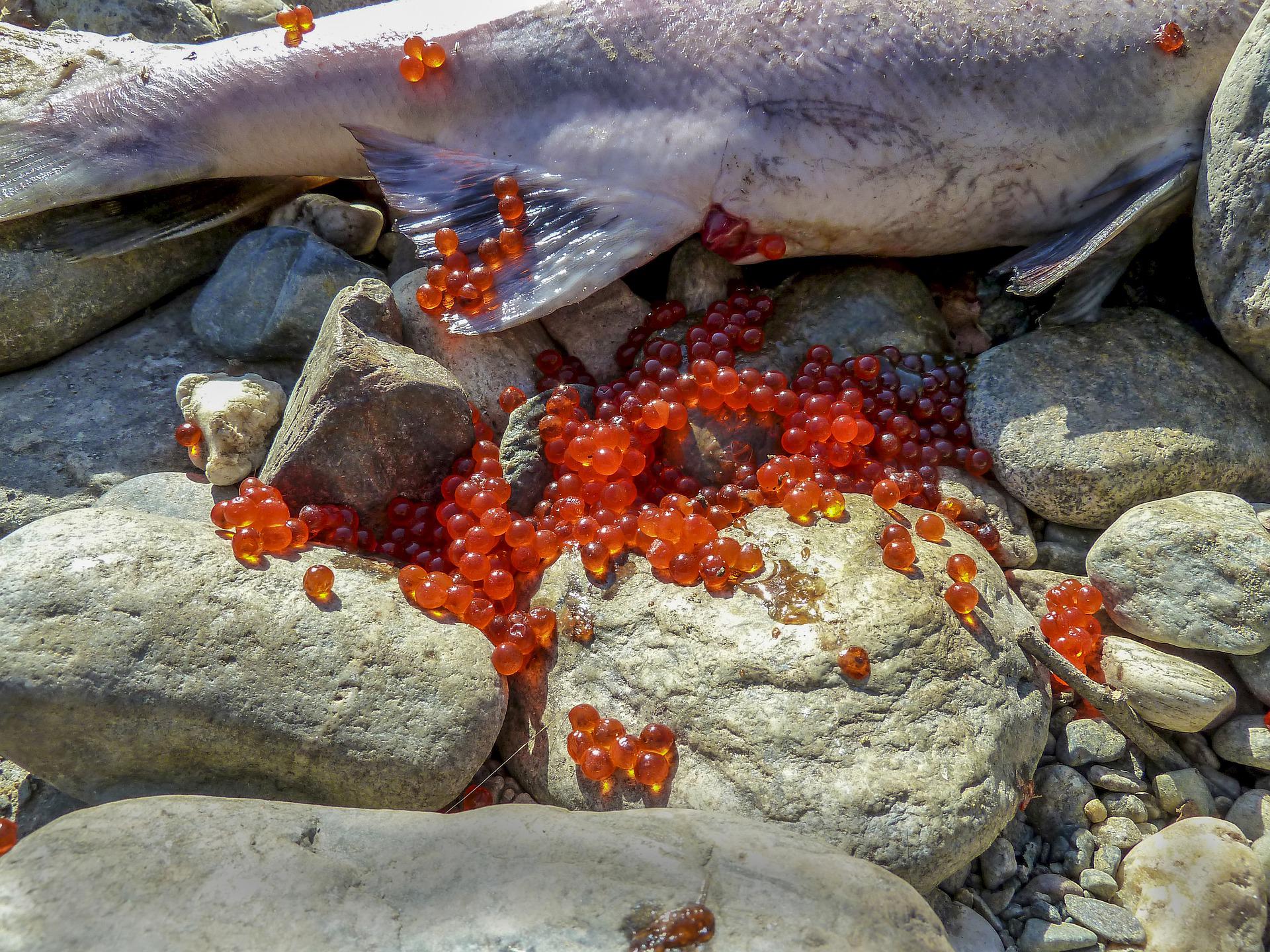Groupers lay their eggs inshore, typically on seagrass beds so the eggs have a better chance of survival than they would further out. An adult grouper then carries the larvae transported inshore to spawning sites. This lasts around 40-60 days. The larvae eventually spawn as small juveniles and stay inshore for about 2-5 years. Depending on the species, the duration can differ. Finally, they move offshore to join the other adult population after they mature. Their reproduction is external.
Why do groupers lay their eggs inshore?
Though the spawning period and numbers differ from grouper to grouper, the primary location of laying eggs for all groupers is the same: the inshore. Their reason for doing so is also the same. The inshore is the safest place for the eggs to hatch and for the baby groupers to develop without any problems.
Open ocean offshore tends to be a dangerous place for juvenile groupers because it is filled with predators. Though groupers are typically predators because of their large size, the same doesn’t apply to babies. Once adults, the groupers can safely migrate offshore because they can protect themselves.
How do groupers reproduce?
Groupers typically stay as solitary creatures, and you won’t notice one near another quickly, but during spawning seasons, which are immediately after the complete moon phases between June and December, the goliath groupers come together in groups of at least 100 individuals. These groups are called spawning aggregations.
Spawning aggregations don’t form in many places throughout the species’ habitat range, only in specific portions. Some goliath groupers travel several miles to reach the aggregation site because that is their most preferred site to spawn. On this site, the actual reproduction takes place.
The groupers reproduce by a process known as broadcast spawning. In this process, females release the eggs they produce. Then, the male groupers simultaneously release their sperm into the water column above deep reefs. This sounds like a peculiar method, but it increases the likelihood of the eggs becoming successfully fertilized to a great extent. It also ensures that egg predators on the reef will not eat the fertilized eggs.
How many eggs does a Grouper lay?
A grouper can lay an unbelievable amount of eggs at a time. This is mainly because they are extremely large, producing and containing more eggs under favorable conditions. The number may differ from fish to fish, but here’s an example to get an idea of the number.
Once, during a spawning season, a 4.6-foot goliath grouper was caught. The fish contained as many as 57 million eggs in its body at that time. That’s a lot! And since goliath groupers spawn in an aggregation of at least 100 fish, you can certainly imagine just how many eggs float up in the water during the spawn. Not all the eggs get fertilized successfully, of course. A great number of them go to waste.
Can groupers change their sex?
Yes, groupers are protogynous hermaphrodites, meaning they can change their sex from female to male. It is a pattern of reproductive development. All groupers are born as females, but some change their sex to males after maturing. This is an exciting phenomenon in grouper fish that contributes to their reproduction.
More precisely, they attain sexual maturity as females and stay functional females for a while. During this time, they produce and lay eggs at the time of the spawning season. After some time, they go through a “sex reversal.” As in, they reverse their sex to male and acquire male characteristics. They do this sex reversal by restructuring their ovaries to the testis, resulting in increased aggression, a behavioral trait of male groupers.
Sex reversal occurs at a certain age and also after the body reaches a certain size. However, it depends significantly on the social conditions of the grouper community. For example, if male groupers are unavailable in society, that’s when the most prominent female will be stimulated for sex reversal. In this way, a balance of sexes is maintained within the population.
Moreover, though all groupers are typically born as females, several groupers are capable of maturing into males directly without going through a female life phase. This type of complex reproductive development is called diandrous protogynous hermaphroditism.
Why do groupers change their sexes?
The exact purpose of the existence of protogynous hermaphroditism among groupers is unknown, but some notable advantages can be mentioned.
Sex reversal is essential to balance the male-female ratio of groupers. Otherwise, all groupers would be female, and reproduction would not have been possible between them. For the continuation of species, this reproductive development plays a significant role.
However, a small percentage of groupers mature enough to become males. It takes about five to seven years for a grouper to reach sexual maturity because they are a typical victim of overfishing. A more significant part of the population is always egg-laying females. However, the number doesn’t differ too much because the sex reversal will occur according to the number of males present.













Pingback: Can Grouper be Farm Raised? | Reel Fishing Guru